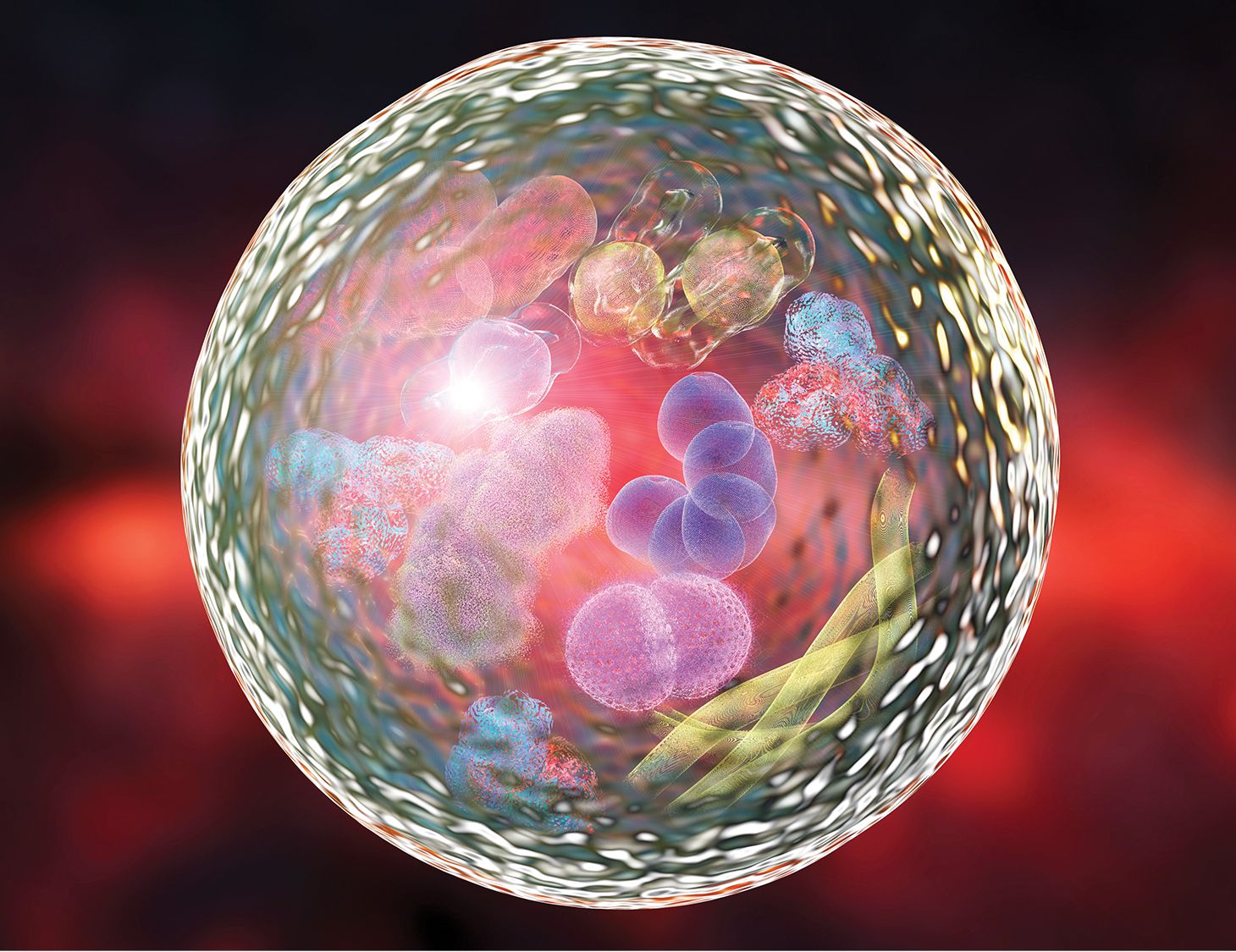 This illustration depicts autophagy. The large red area inside the cell is a lysosome— a membrane-bound, enzyme-filled structure that degrades a cell’s waste products.
This illustration depicts autophagy. The large red area inside the cell is a lysosome— a membrane-bound, enzyme-filled structure that degrades a cell’s waste products.
As we age, our hematopoietic (blood-forming) stem cells (HSCs) become less efficient and less able to make healthy new blood cells. In a study published in January 2021 in Nature, Einstein researchers found that this reduction in HSC efficiency results in part from deterioration of chaperone-mediated autophagy (CMA), the housekeeping process that removes and recycles damaged proteins and other waste materials that interfere with our cells’ ability to function.
“While the aging of HSCs in our bone marrow is inevitable, the good news is that it may be reversible,” says study co-leader Ana Maria Cuervo, M.D., Ph.D., professor of developmental and molecular biology, of anatomy and structural biology, and of medicine, and the Robert and Renée Belfer Chair for the Study of Neurodegenerative Diseases at Einstein.
In previous studies, Dr. Cuervo discovered that the decline in CMA allows waste to build up in cells, contributing to Parkinson’s, Alzheimer’s, and aging in general, and that revving up CMA can help prevent those processes. The current study investigates whether CMA’s age-related decline plays a role in the falloff of HSC activity.
Dr. Cuervo’s team first established that CMA in the HSCs of mice does indeed become less efficient with age. The researchers then showed that HSCs depend on CMA for their vitality—both to maintain a healthy balance of proteins and to switch from their normally quiescent state to their active, blood-cell-forming state.
The team found that blocking CMA in the HSCs of young mice duplicates many of the features observed in the HSCs of aged mice. Conversely, young mice genetically engineered to prevent CMA in their HSCs from declining with age were able to repopulate bone marrow with healthy blood cells even into old age. “Even more interesting is that when we pharmacologically activated CMA in old mice, we were able to restore their HSC activity,” Dr. Cuervo says.
These studies in mice may also be relevant to human health. The researchers took HSCs from people over 65 and treated them with a CMA-activating drug developed by study co-author Evripidis Gavathiotis, Ph.D., professor of biochemistry and of medicine. The result: The HSCs recovered the ability to make healthy blood cells.
Dr. Cuervo notes that some blood cancers, such as acute myeloid leukemia and myelodysplastic syndromes, almost always affect older people and evolve from mutations that accumulate in HSCs; revving up CMA in HSCs, she says, could help prevent those blood cancers from occurring.